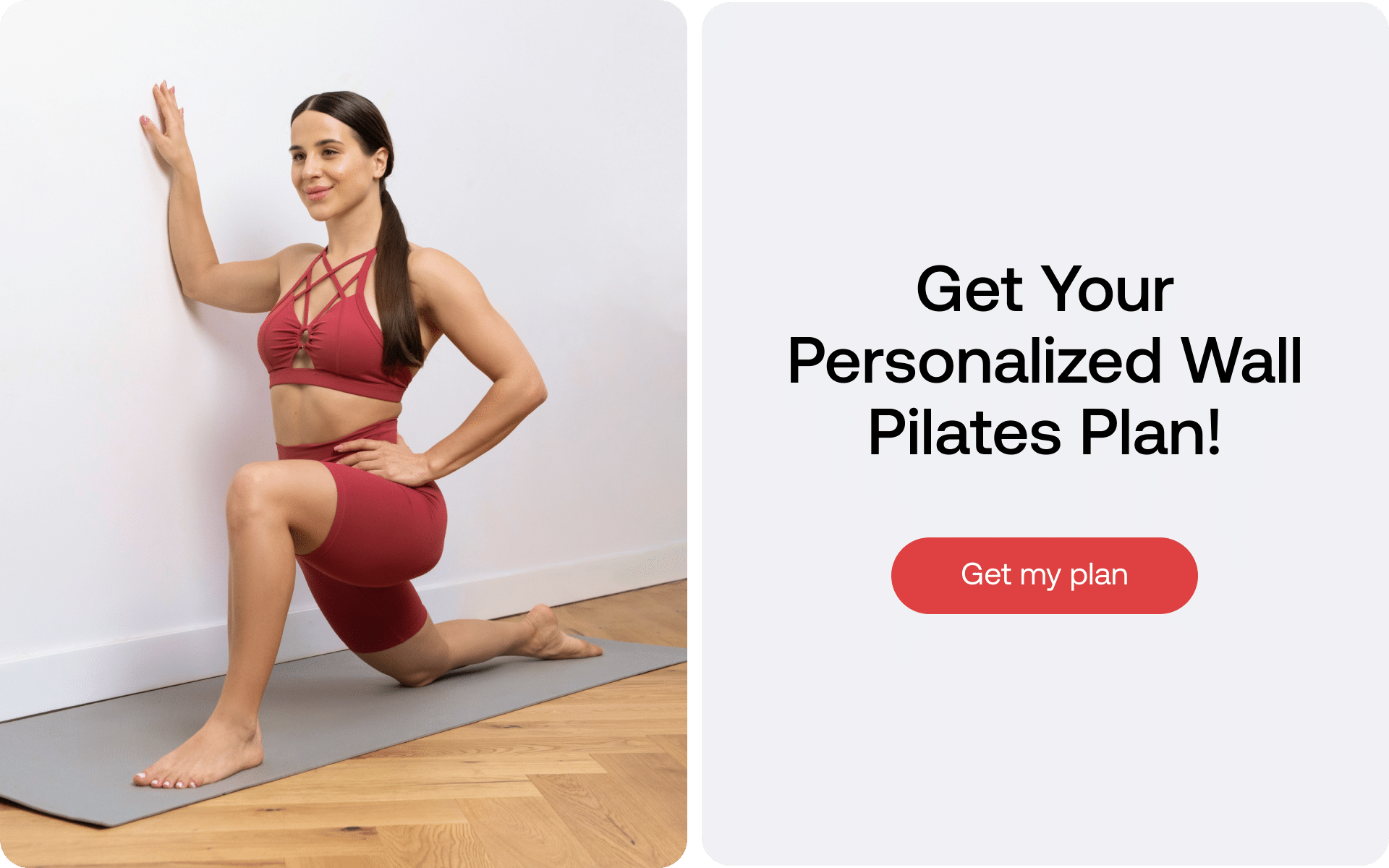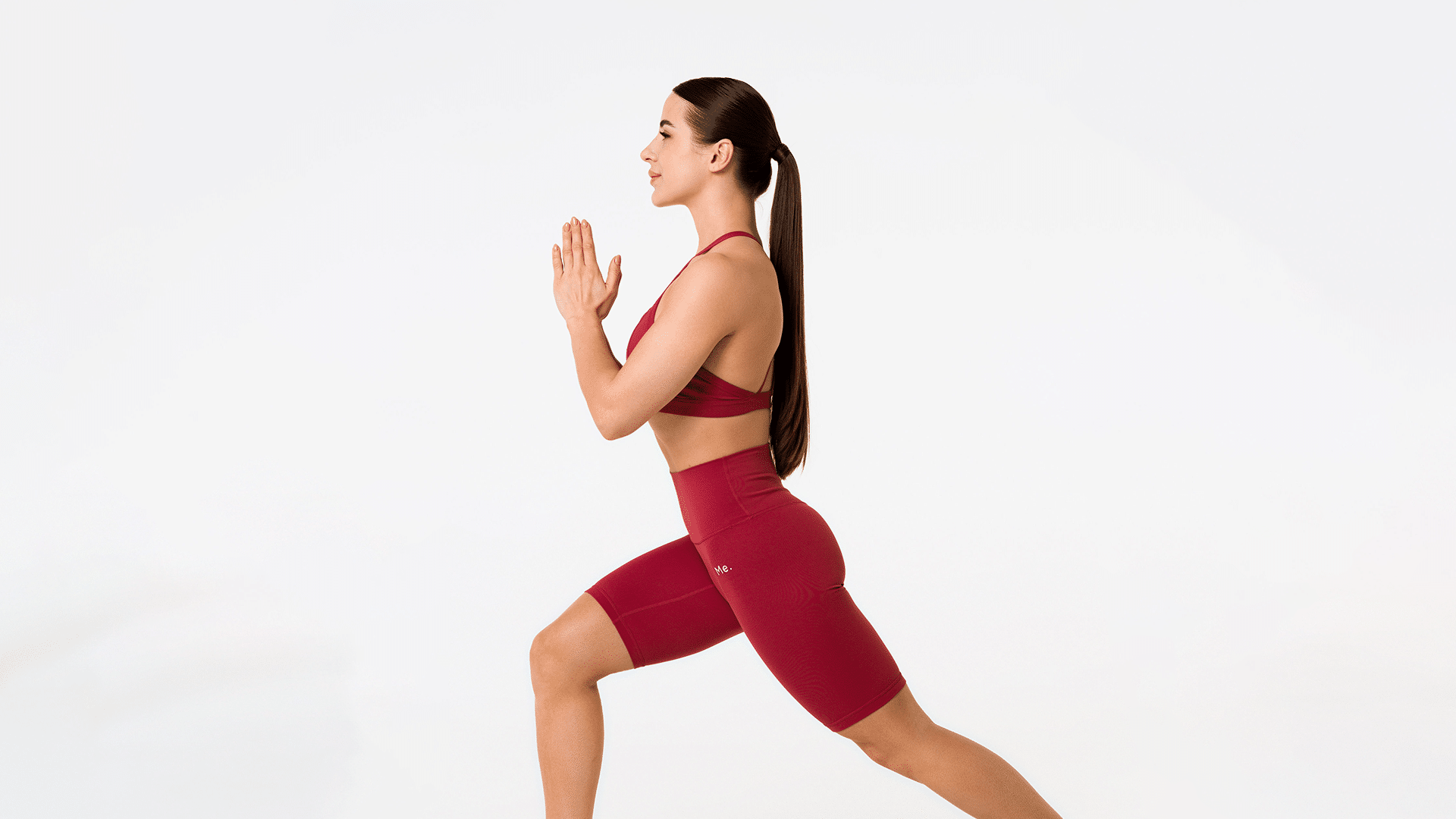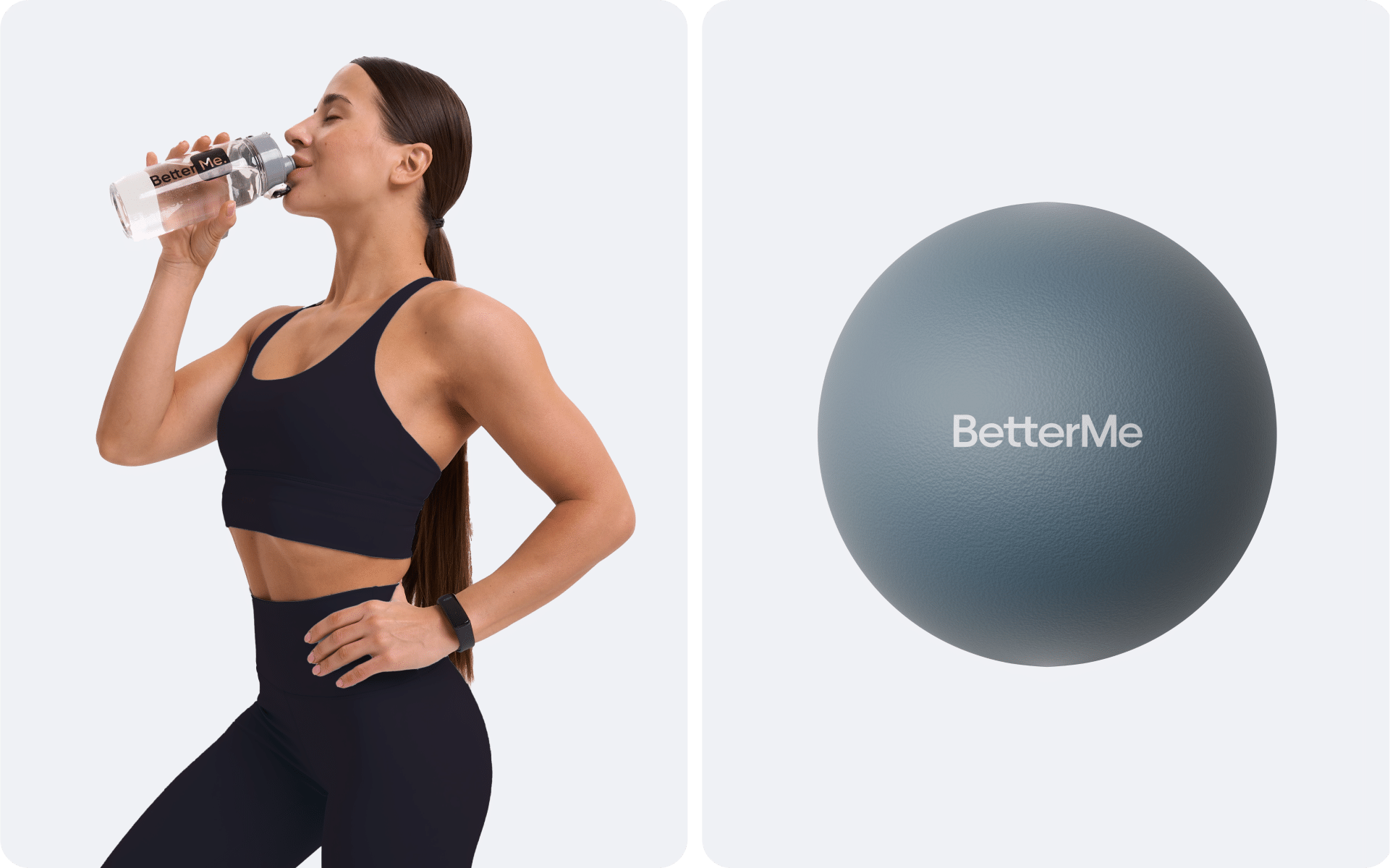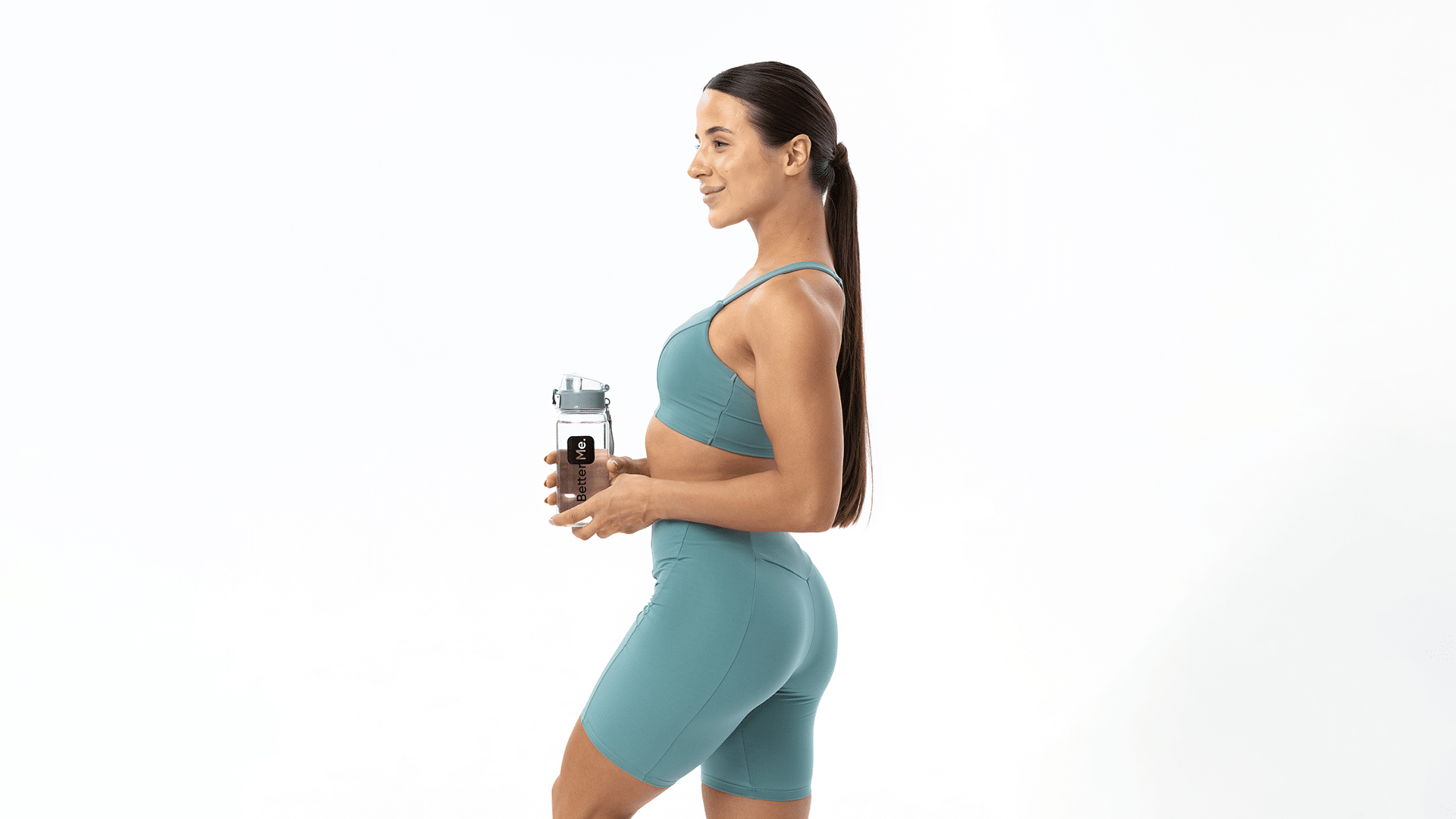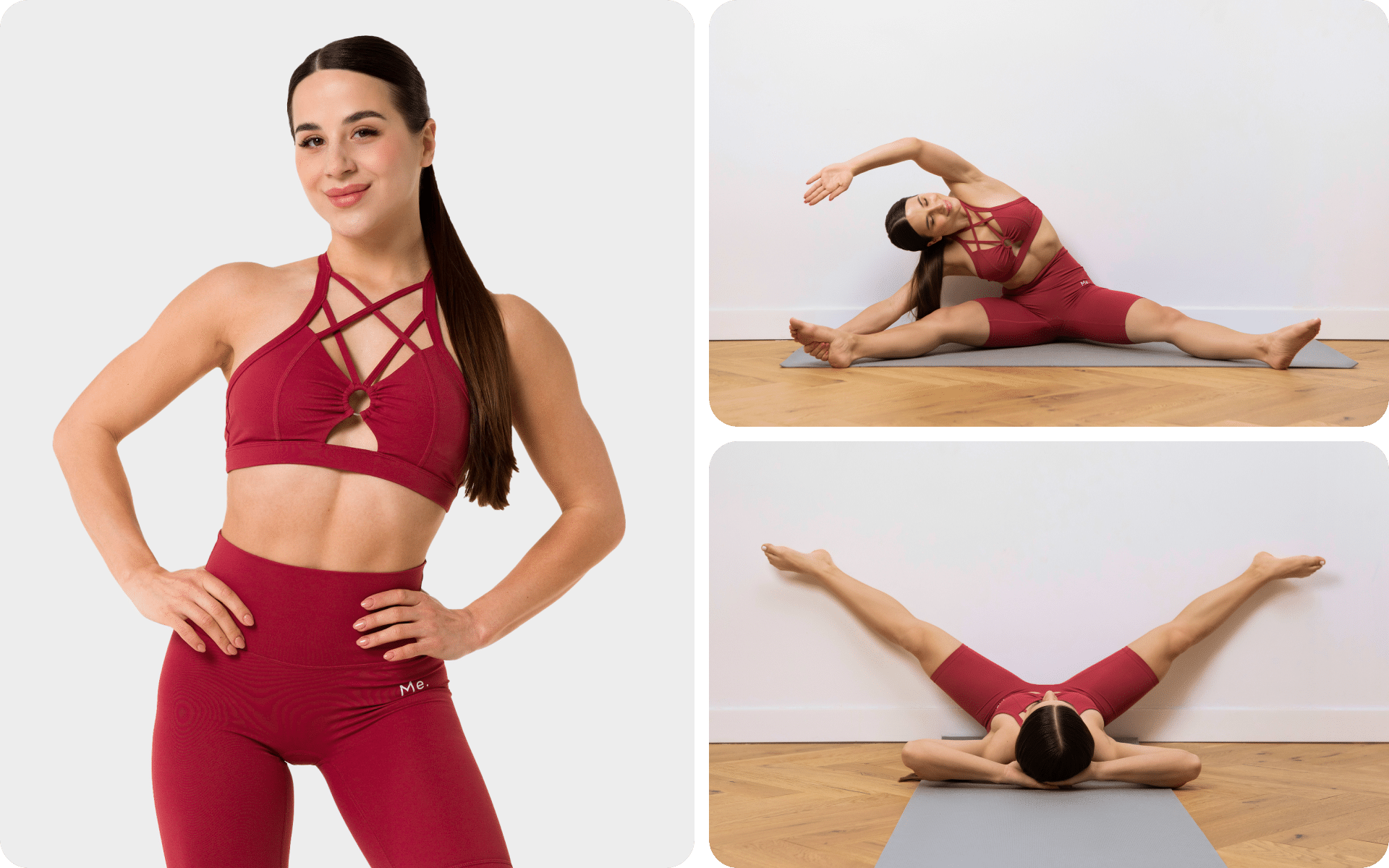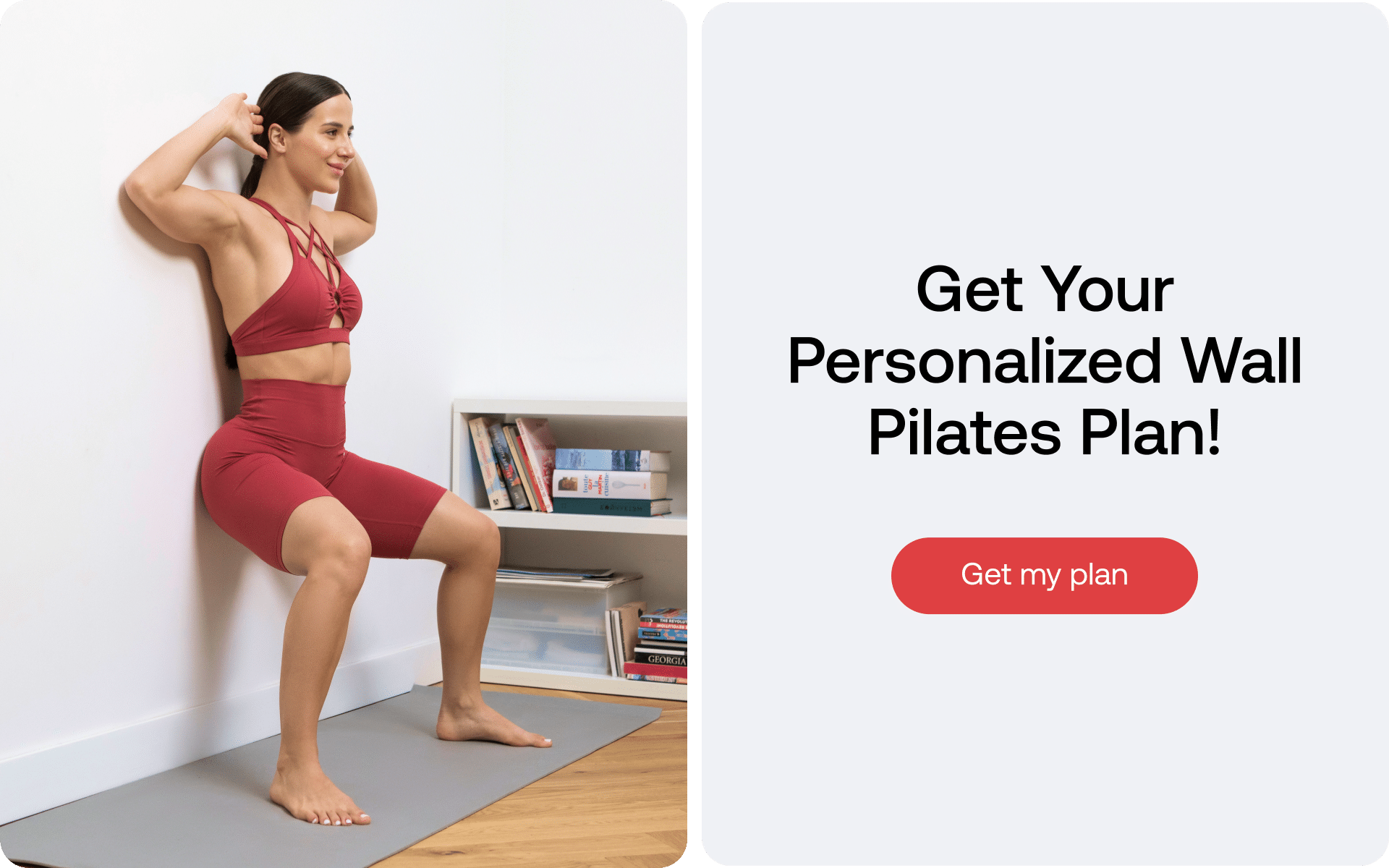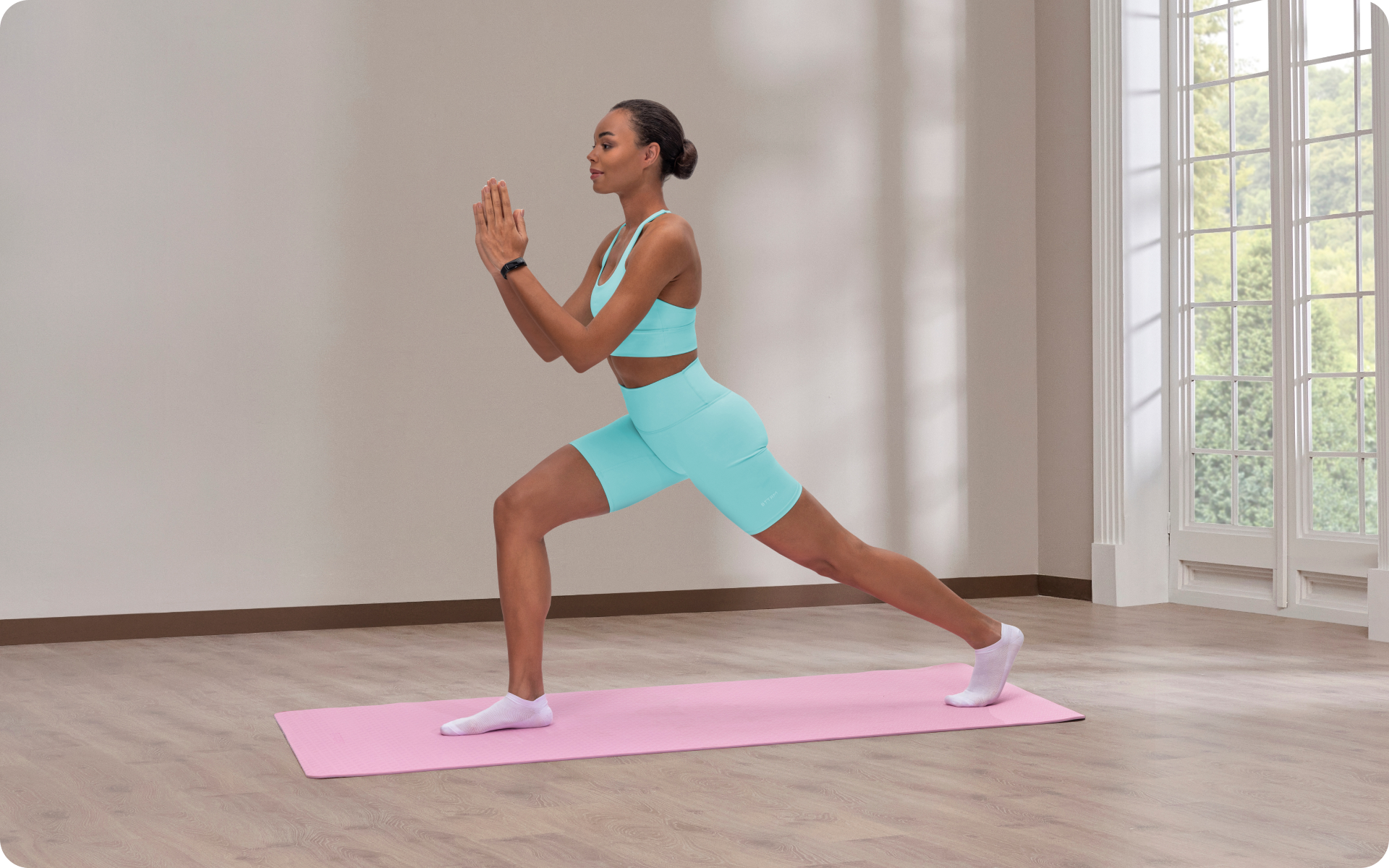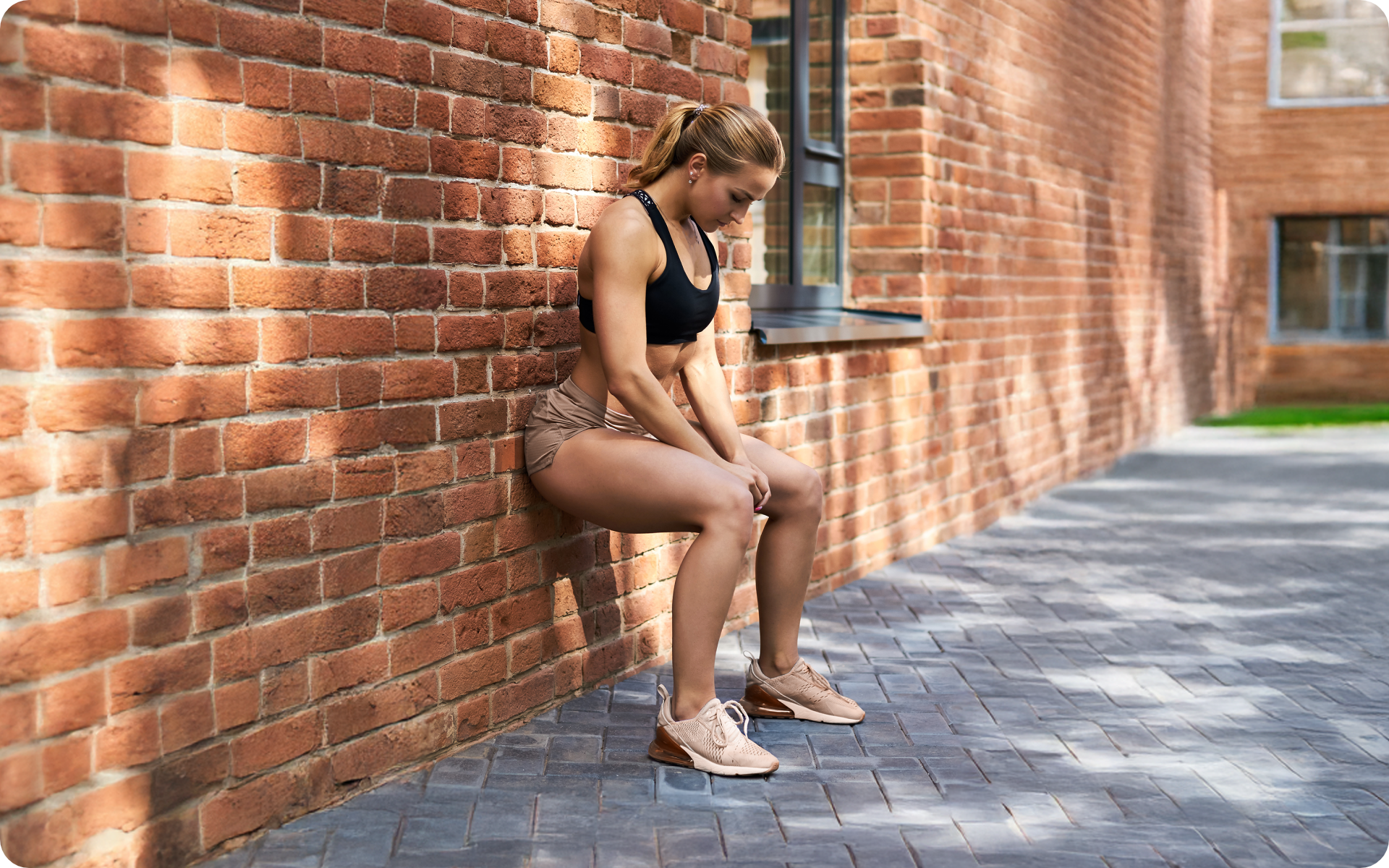Wall sits, a powerful yet often underrated isometric exercise, have long been a staple in the fitness world. Performed by pressing your back firmly against a wall and sliding down until your thighs are parallel to the ground, wall sits engage multiple muscle groups and test your mental fortitude. Despite their simplicity, wall sits pack a punch that can transform your fitness routine, offering benefits such as increased muscular endurance, improved posture, and reduced risk of injury. In this comprehensive guide, we’ll dive deep into the world of wall sits, examining both their remarkable benefits and potential drawbacks, and ultimately revealing why this unassuming exercise deserves a spot in your fitness arsenal.
How To Do Wall Sits
To perform a wall sit correctly, follow these step-by-step instructions:
-
Find A Suitable Location
Choose a flat, sturdy wall with enough space for you to stand and slide down into a seated position.
-
Stand Against The Wall
Position yourself with your back flat against the wall, feet shoulder-width apart, and approximately 2 feet away from the wall.
-
Begin Sliding Down
Slowly slide your back down the wall while simultaneously walking your feet forward. Keep your core engaged and maintain contact between your back and the wall.
-
Achieve The Seated Position
Lower yourself until your thighs are parallel to the ground, creating a 90-degree angle at your hips and knees. Ensure that your knees are aligned directly above your ankles and not extend past your toes.
-
Adjust Your Feet
If necessary, adjust your feet slightly to ensure proper alignment of your knees and ankles.
-
Engage Your Muscles
Press your back firmly against the wall and engage your core, quadriceps, glutes, and hamstrings to maintain the position.
-
Hold The Position
Hold the wall sit for the desired duration, focusing on your breathing and maintaining proper form.
-
Return To Standing
To release the position, slowly push through your heels and slide back up the wall to a standing position.
Remember to always maintain proper form during a wall sit to maximize its benefits and reduce the risk of injury. As you become more comfortable with the exercise, you can gradually increase the duration of your wall sits or try out various wall sit variations to challenge yourself further.
What Muscles Do Wall Sits Work?
Wall sits primarily target the lower body, engaging and strengthening both major and minor muscle groups. Here’s a breakdown of the muscles involved and their respective roles during the exercise:
Major Muscles
1. Quadriceps
Comprising four distinct muscles at the front of your thighs, the quadriceps are responsible for knee extension and hip flexion.
During wall sits, they bear the brunt of the effort as they contract to stabilize your knees and maintain the position.
Strengthening your quadriceps can improve overall leg power, increase stability, and reduce the risk of knee injuries.
2. Glutes
Located in your buttocks, the gluteal muscles consist of three parts: gluteus maximus, medius, and minimus.
They play a crucial role in hip extension, rotation, and stabilization. While performing wall sits, your glutes work together to maintain proper alignment and posture.
Stronger glutes can lead to improved athletic performance, better balance, and reduced lower back pain.
Read More: Chair Pilates For Seniors With Chronic Pain: Gentle Exercises To Reduce Discomfort
3. Hamstrings
Situated at the back of your thighs, the hamstrings are a group of three muscles that handle knee flexion and hip extension.
Although not as heavily engaged as the quadriceps during wall sits, they provide essential support and stability in maintaining the position.
Strengthening your hamstrings can help prevent injuries and improve overall leg strength.
Minor Muscles
4. Calves
The calves comprise two muscles, the gastrocnemius and soleus, located at the back of your lower legs.
They are responsible for plantar flexion, which helps you push off the ground while walking or running. During wall sits, the calves offer stability and support to the lower legs.
Strengthened calves can enhance your balance, agility, and overall lower-body strength.
5. Core Muscles
Although wall sits primarily focus on the lower body, they also engage your core muscles, including the rectus abdominis, obliques, and erector spinae.
These muscles help stabilize your spine, maintain proper posture, and support your torso during the exercise. A strong core is essential for overall body strength, stability, and injury prevention.
What Are The Benefits Of The Wall Sit?
The wall sit is a simple, yet effective exercise that can bring myriad benefits to your overall fitness. Here are some of the potential advantages you can gain by performing this exercise regularly:
1. Improved Muscular Endurance
Wall sits challenge your lower body muscles to maintain a static position for an extended period, building stamina and endurance.
This increased endurance can translate into better performance in other sports and daily activities, allowing you to perform tasks with less fatigue and greater efficiency.
Additionally, improving muscular endurance can help prevent injuries caused by muscle imbalances and overuse (3).
2. Increased Core Strength
Although primarily targeting the lower body, wall sits also engage your core muscles as they work together to maintain proper posture and spinal alignment.
A strong core is vital for overall body stability, balance, and injury prevention (5). By incorporating wall sits into your routine, you can develop a solid foundation that supports your entire body, making everyday movements easier and more efficient.
3. Better Balance And Stability
Wall sits require you to engage multiple muscle groups simultaneously, promoting proper alignment and balance. As you strengthen these muscles, your overall stability and coordination will improve.
This enhanced balance can benefit you in various sports, from running and cycling to yoga and dance, as well as reduce the risk of falls and injuries in daily life.
If you’ve mustered up the courage to crush your weight loss goal, let Betterme take the sting out of this demanding process. Our app will help you restructure your habits, remold your life and crank up your fitness results!
4. Improved Posture
Poor posture can lead to muscle imbalances, chronic pain, and reduced mobility. Wall sits encourage proper spinal alignment and engage the muscles responsible for maintaining good posture, such as the core and glutes.
By regularly practicing wall sits, you can strengthen these muscles, correct postural imbalances, and reduce the risk of developing posture-related issues (6).
5. Convenience And Versatility
Wall sits are a simple, equipment-free exercise that can be performed virtually anywhere with a flat, stable surface. This convenience makes it easy to incorporate wall sits into your fitness routine, whether at home, the gym, or even during a break at work.
Furthermore, wall sits can be easily modified to increase or decrease intensity, accommodating various fitness levels and goals.
6. Reduced Risk Of Injury
By targeting multiple muscle groups, wall sits can help correct muscle imbalances that may contribute to injuries. Additionally, as an isometric exercise, wall sits place less stress on your joints compared to dynamic exercises like squats or lunges (2).
This reduced joint strain makes wall sits a safer option for those recovering from injury or experiencing joint pain.
7. Increased Mental Toughness
Holding a wall sit for an extended period tests not only your physical strength but also your mental fortitude. As you push through the discomfort and maintain proper form, you build mental resilience that can benefit you in other aspects of life, such as overcoming challenges and managing stress.
8. Efficient Calorie Burn
While wall sits may not burn as many calories as high-intensity cardio workouts, they still provide an efficient way to burn calories and tone muscles.
The sustained muscle engagement required during wall sits increases your heart rate and boosts metabolism, helping you burn calories even after you’ve completed the exercise.
This efficient calorie burn can be especially beneficial for those looking to lose weight or maintain a healthy body composition.
What Happens If You Do Wall Sits Everyday?
While there are several benefits to performing wall sits every day, it’s essential to balance them with rest, recovery, and a variety of other exercises to prevent overtraining and ensure overall muscle development. Here’s a breakdown of the potential benefits and drawbacks of doing this exercise every day:
Pros
1. Increased Muscular Endurance
Performing wall sits every day can lead to improved muscular endurance in your lower body and core. This increased stamina can benefit you in other sports, daily activities, and overall physical performance (3).
Read More: Stand Strong, Move Mindfully: The Art Of Standing Pilates Exercises
2. Improved Posture And Alignment
Daily practice of wall sits encourages proper spinal alignment and strengthens the muscles responsible for maintaining good posture. This can help correct postural imbalances and reduce the risk of developing posture-related issues (6).
3. Better Balance And Stability
Wall sits require engagement from multiple muscle groups simultaneously, promoting balance and stability. By consistently practicing wall sits, you can enhance your overall coordination and reduce the risk of falls and injuries.
4. Convenience And Consistency
Wall sits are an equipment-free exercise that can be performed almost anywhere. Incorporating them into your daily routine can help build consistency in your fitness regimen, making it easier to achieve your fitness goals.
Cons
5. Risk Of Overtraining
Doing wall sits every day without allowing adequate rest and recovery could potentially lead to overtraining. Overtraining can cause muscle fatigue, decreased performance, and increased risk of injury. To avoid overtraining, it’s essential to listen to your body and allow for rest days or alternate between different muscle groups.
6. Limited Muscle Growth
While wall sits can improve muscular endurance, they may not provide the same level of muscle growth as dynamic exercises like squats or lunges. If building muscle mass is your primary goal, incorporating a variety of exercises targeting different muscle groups and using progressive overload is necessary (4).
7. Plateauing
Your body may adapt to the daily wall sit routine, leading to a plateau in progress. To continue seeing improvements in strength and endurance, it’s crucial to vary your exercises, increase intensity, or change the duration of your wall sits (1).
8. Neglecting Other Muscle Groups
Focusing solely on wall sits may lead to neglecting other important muscle groups. To achieve a well-rounded fitness routine, it’s essential to incorporate exercises that target various muscle groups throughout your body.
Reasons why BetterMe is a safe bet: a wide range of calorie-blasting workouts, finger-licking recipes, 24/7 support, challenges that’ll keep you on your best game, and that just scratches the surface! Start using our app and watch the magic happen.
Wall Sit Exercise Variations Worth Trying
Once you master the traditional wall sit exercise, you can try some of these variations to add extra challenge and variety.
1. Single-Leg Wall Sit
This variation targets one leg at a time, increasing the intensity and challenge of the exercise. It’s best suited for those looking to improve their balance, stability, and unilateral strength. You may choose this variation when you want to focus on individual leg muscle development.
How to do it:
- Begin in the standard wall sit position with your back against the wall and thighs parallel to the ground.
- Slowly lift one foot off the ground, extending the leg straight out in front of you.
- Hold the position for the desired duration, then switch legs and repeat.
2. Wall Sit With Heel Raise
This variation adds calf engagement to the standard wall sit, making it ideal for those looking to target their lower leg muscles. You may choose this variation when you want to work on your calf strength and stability.
How to do it:
- Assume the standard wall sit position.
- Slowly raise both heels off the ground, transferring your weight onto the balls of your feet.
- Hold the position for the desired duration, then lower your heels back to the ground.
3. Wall Sit With Resistance Band
Adding a resistance band increases the difficulty of the wall sit, targeting your glutes and hip abductors more intensely. This variation is suitable for those looking to improve hip stability and glute activation. You may choose this variation when you want to enhance your lower body workout.
How to do it:
- Place a resistance band around your thighs, just above the knees.
- Assume the standard wall sit position.
- Press your knees outward against the resistance band while maintaining the wall sit.
- Hold the position for the desired duration.
4. Wall Sit With Arm Extensions
This variation incorporates upper body engagement, making it a more comprehensive workout. It’s best suited for those looking to incorporate some upper body work into their wall sit routine. You may choose this variation when you want to target multiple muscle groups simultaneously.
How to do it:
- Begin in the standard wall sit position.
- Extend your arms straight out in front of you, palms facing each other.
- Hold the position for the desired duration, maintaining tension in your arms and shoulders.
5. Wall Sit With Medicine Ball Squeeze
The addition of a medicine ball challenges your inner thigh and core muscles. This variation is ideal for those looking to improve their adductor strength and core stability. You may choose this variation when you want to intensify your lower body workout.
How to do it:
- Begin in the standard wall sit position with a medicine ball between your knees.
- Squeeze the medicine ball using your inner thigh muscles while maintaining the wall sit.
- Hold the position for the desired duration, keeping constant pressure on the ball.
6. Wall Sit With Lateral Leg Lift
This variation targets your outer thighs and glutes, making it suitable for those looking to enhance hip stability and strength. You may choose this variation when you want to focus on your abductor muscles.
How to do it:
- Start in the standard wall sit position.
- Slowly lift one leg out to the side, keeping the foot flexed and the leg straight.
- Hold the position for a few seconds, then return the leg to the starting position.
- Repeat on the other side and continue alternating legs for the desired duration.
7. Wall Sit With Swiss Ball
Using a Swiss ball in this variation adds an element of instability, challenging your balance and core muscles. It’s best suited for those looking to improve their core strength and proprioception. You may choose this variation when you want to add a balance challenge to your wall sit routine.
How to do it:
- Place a Swiss ball between your lower back and the wall.
- Assume the standard wall sit position, using the Swiss ball to support your back.
- Hold the position for the desired duration, engaging your core muscles to maintain stability.
The Bottom Line
Incorporating wall sits and their variations into your fitness routine can lead to improved muscular endurance, better posture, increased core strength, and enhanced balance and stability.
By understanding the benefits, drawbacks, and various modifications, you can tailor your wall sit exercises to meet your individual fitness goals and needs.
Remember to listen to your body, allow for adequate rest and recovery, and combine wall sits with a well-rounded workout regimen for optimal results.
DISCLAIMER:
This article is intended for general informational purposes only and does not serve to address individual circumstances. It is not a substitute for professional advice or help and should not be relied on for making any kind of decision-making. Any action taken as a direct or indirect result of the information in this article is entirely at your own risk and is your sole responsibility.
BetterMe, its content staff, and its medical advisors accept no responsibility for inaccuracies, errors, misstatements, inconsistencies, or omissions and specifically disclaim any liability, loss or risk, personal, professional or otherwise, which may be incurred as a consequence, directly or indirectly, of the use and/or application of any content.
You should always seek the advice of your physician or other qualified health provider with any questions you may have regarding a medical condition or your specific situation. Never disregard professional medical advice or delay seeking it because of BetterMe content. If you suspect or think you may have a medical emergency, call your doctor.
SOURCES:
- Exercise intensity (2015, betterhealth.vic.gov.au)
- Isometric training and long-term adaptations: Effects of muscle length, intensity, and intent: A systematic review (2019, nih.gov)
- Musculoskeletal fitness, health outcomes and quality of life (2001, nih.gov)
- Maximizing Muscle Hypertrophy: A Systematic Review of Advanced Resistance Training Techniques and Methods (2019, nih.gov)
- The real-world benefits of strengthening your core (2012, harvard.edu)
- Why good posture matters (2017, nih.gov)

